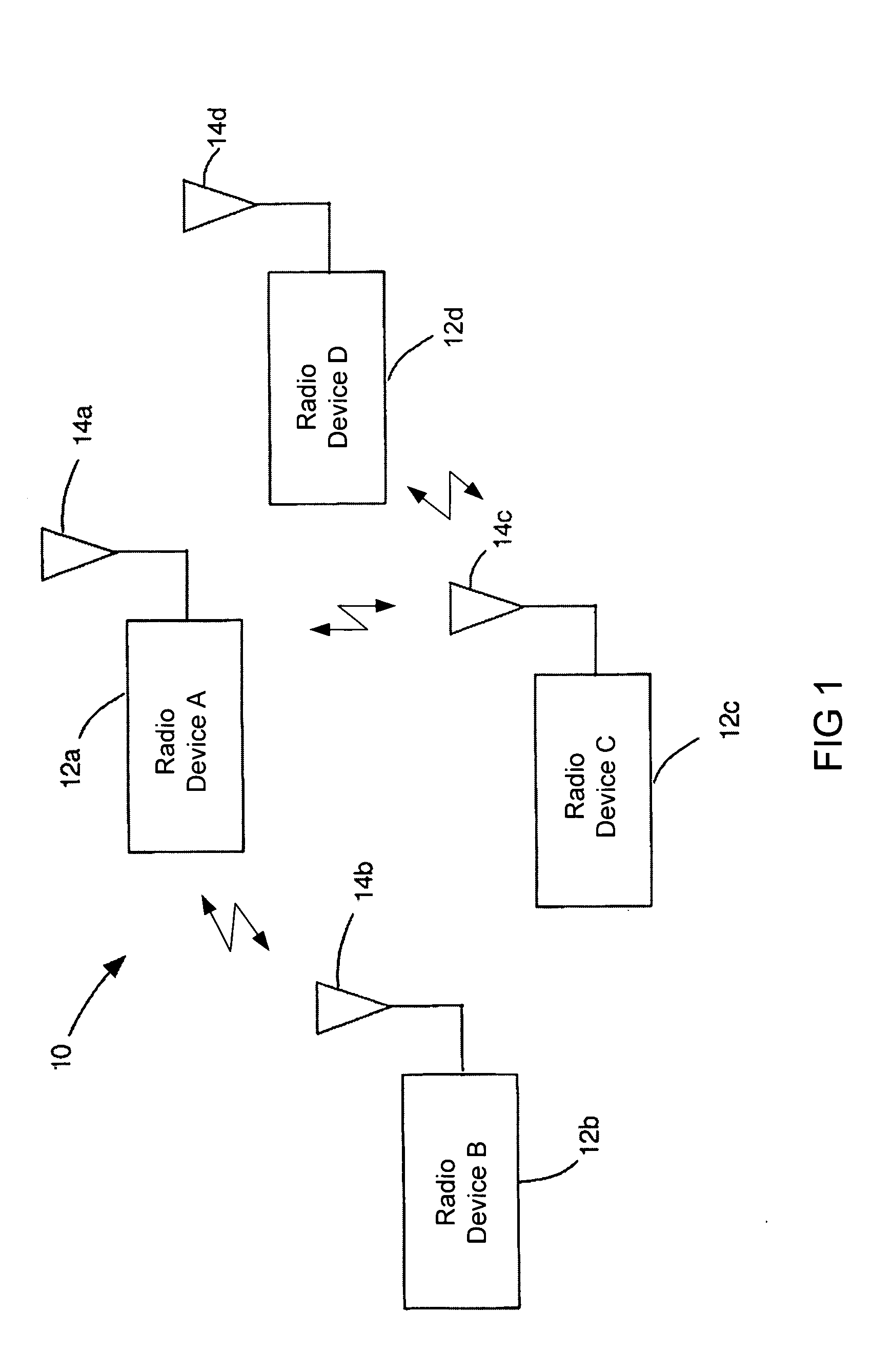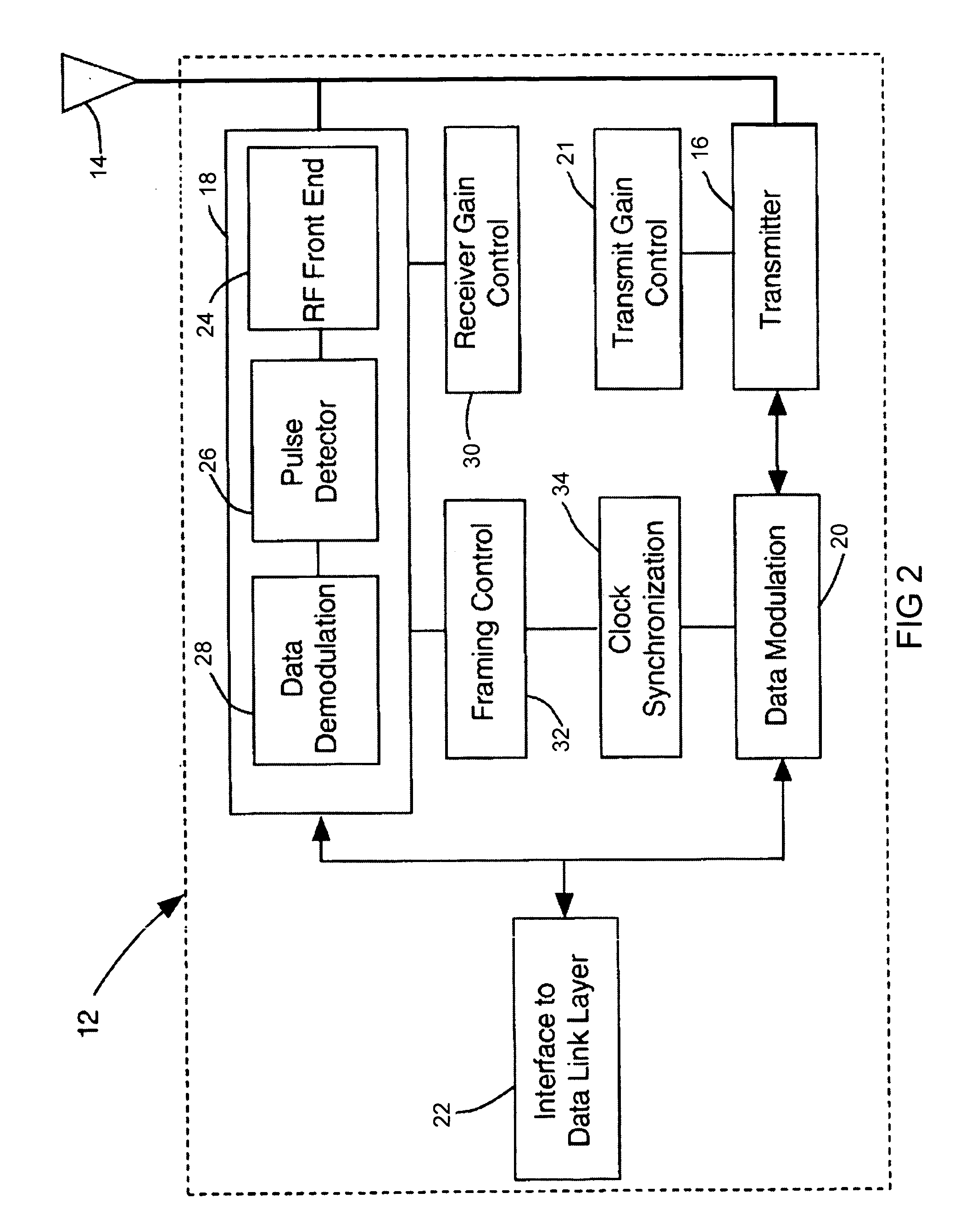Ultra wide band communication systems and methods
a communication system and ultra-wide band technology, applied in the field of ultra-wide band communication systems and methods, can solve the problems of increasing interference with data reception, poor signal reception, and using conventional narrowband modulated carrier frequencies
- Summary
- Abstract
- Description
- Claims
- Application Information
AI Technical Summary
Benefits of technology
Problems solved by technology
Method used
Image
Examples
Embodiment Construction
[0037] Those of ordinary skill in the art will realize that the following description of the present invention is illustrative only and not in any way limiting. Other embodiments of the invention will readily suggest themselves to such skilled persons.
[0038] The present invention provides a Time Division Multiple Access (TDMA) system and method that allows sharing a wireless medium which can identify and operate in a variable bit rate environment. The present invention provides a system and method capable of supporting devices with vastly different bandwidth requirements. Some devices, such as a televisions, require high bandwidth data communication. The higher cost associated with a television allows for the design of a television having high data rate modulation techniques. Other device such as home thermostats have lower bandwidth requirements and require simpler modulation techniques for lower cost connectivity.
[0039] The present invention operates within a network which allow...
PUM
 Login to View More
Login to View More Abstract
Description
Claims
Application Information
 Login to View More
Login to View More - R&D
- Intellectual Property
- Life Sciences
- Materials
- Tech Scout
- Unparalleled Data Quality
- Higher Quality Content
- 60% Fewer Hallucinations
Browse by: Latest US Patents, China's latest patents, Technical Efficacy Thesaurus, Application Domain, Technology Topic, Popular Technical Reports.
© 2025 PatSnap. All rights reserved.Legal|Privacy policy|Modern Slavery Act Transparency Statement|Sitemap|About US| Contact US: help@patsnap.com



